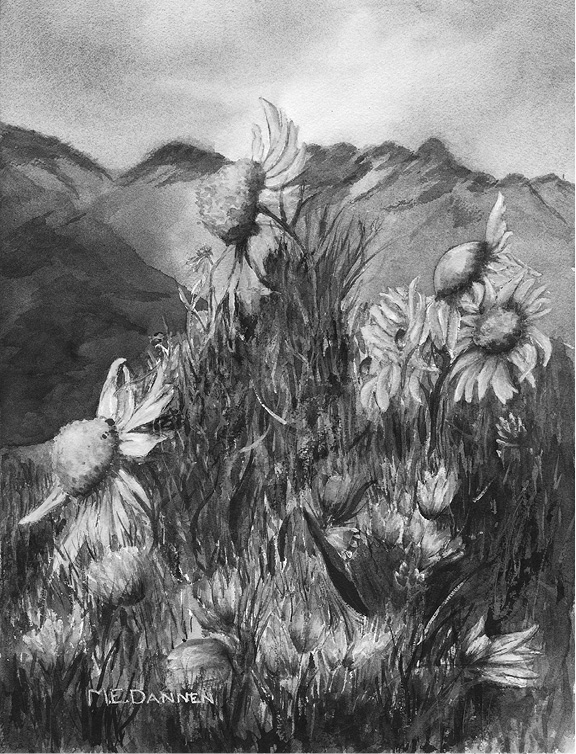Climbing to 12,183 feet above sea level, Trail Ridge Road is the highest continuous highway in the United States. Because life zones of different kinds of plants vary with altitude, this highly scenic road passes through three different levels of life: the montane zone of ponderosa pine and Douglas-fir at the base of the road, the subalpine zone of thickly growing Engelmann spruce and subalpine fir, and the alpine zone above tree line.
Approximately 11 miles of the road’s 44-mile length are above tree line; 3 miles run more than 12,000 feet above sea level. Only from late May or early June to approximately the latter part of October do wind and snow permit Trail Ridge to be open to motorized traffic. This easy access to broad, rolling expanses of alpine tundra completely unaltered by grazing livestock is an outstanding feature of Rocky Mountain National Park.
On the alpine tundra, the wind does not allow tree growth, and a tall plant is 6 inches high. During the short blooming season, however, alpine vistas of abundant wildflowers carpeting the tundra and snow-accented crags in the background are breathtaking. It is small surprise that many people want to get out of their cars to examine this unique environment more closely.
Unfortunately tundra plants live constantly on the edge of death due to the bitter climate they must endure during most of the year. Trampling by thousands of feet near Trail Ridge Road can destroy a system of plants that could take centuries to grow back. Therefore, where large parking areas concentrate visitors on the tundra, the National Park Service has built hardened trails. Foot traffic is restricted to these trails in order to avoid excessive wear on the surrounding tundra,allowing many people to observe what healthy tundra looks like. These tundra protection areas surround the short trails at Forest Canyon Overlook, Rock Cut, and Fall River Pass.
Away from these heavy-use areas, there is no restriction on where you may walk on the tundra (unless signs indicate additional exclusion zones). There are, however, suggestions about how to reduce walking impact on the plants: If a trail crosses the tundra, use that trail, thereby limiting wear to areas already sacrificed. If a trail is not available, walkers should spread out rather than follow one behind the other. Try to tread lightly and step from rock to rock when possible.
